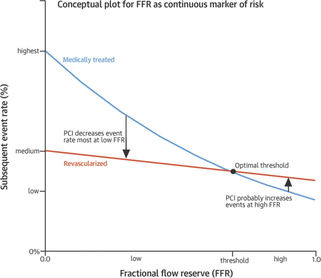 Anatomy is important but it tells you very little about the functioning of the human body. Galen, who studied the anatomy of the human body in the first century proposed that blood moved around the body by diffusion and he did not regard the heart as a pump. His theory, completely wrong, dominated medial opinion for nearly 15 centuries. There was no idea of the circulation of blood until the publication of William Harvey's Du Moto Cordis. After this the great physiologists of the 19th and 20th centuries defined the very purpose of the organs of the body and allow us come to a point of understanding how the body worked. It seems so simple now. How could anyone seriously have believed the Galenic theory? What seemed so right was in fact so wrong. If Galen had studied physiology he would have realised this but his anatomy only told him about structure not function and it needed physiology to understand the circulation. If anatomy is so limited in understanding function why are cardiologists today still so attached to anatomical assessment of coronary arteries using angiography. If you are trying to decide whether a coronary stenosis is significant or not, and therefore whether to recommend a stent or a bypass graft, the assessment of whether the lesion is flow limiting or not is vital. Can anatomy really tell you that. Is the percentage stenosis a good marker? When I started training in cardiology nearly 20 years ago it was often said in the catheter laboratory about an angiogram: "Do a intravascular ultrasound if you want to put a stent in, do a pressure wire study if you don't." Cardiologists were so attached to their visual assessments of coronary artery disease they forgot that with intermediate stenosis of 40-70% it was impossible to determine the physiological significance by angiography. That didn't stop them of course. Many patients around the world have had bypass grafting and stenting of non-flow limiting lesions and medial therapy for significant ones. We are now reaching a mature evolution of our speciality of interventional cardiology and it's time to call into question the role of diagnostic coronary angiography. First performed by Mason Sones in 1958 we may ask whether in 2014 assessment of anatomy alone is good enough to make decisions about revascularisation? I teach my fellows that for intermediate stenosis you might as well flip a coin to decide whether a lesion is flow limiting or not - you simply cannot tell and the quicker cardiologist wake up and admit this the better. The pressure wire and measurement of fractional flow reserve (FFR) has been on the shelf in the catheter laboratory since about 1996. The technology hasn't changed but our attitude to it has. I have always been in favour of this technology but there more evidence that is collected about its utility the more I like it. In recent years cardiologists have begun to use it more and more frequently with data from BCIS showed that in 2008 there were about 5,000 pressure wire studies rising to over 13,000 in 2013. Before the publication of COURAGE, FAME and DEFER there was a scepticism about the device amongst many interventional cardiologists. They "assumed" that stenting worked and that it was good for patients and they weren't going to have their clinical and anatomical judgement of lesion severity changed by a pressure wire. They were used to the angiogram and when the lesion looked severe and then a pressure wire told them it was not haemodynamically significant it must be the pressure wire that was wrong. Post COURAGE it looked like stents did not affect prognosis and the FAME and DEFER studies showed that lesions that were not haemodynamically significant could be safely treated medically and not stented or bypassed. Sadly for the interventional cardiologist wedded to the angiogram coronary physiology is complex and the significance of a lesion is not simply based on the percentage stenosis. It depends on multiple factors including the size of the vessel, the length of the lesion, the size of the territory subtended by the artery and the presence of collaterals. Often colleagues look shocked when I say I don't know whether an angiographic lesion is flow limiting. They expect the interventional cardiologist to know the answer to something as simple as this. But of course it is not simple for the reasons described above. There are people who are willing to give a firm opinion one way or the other about the functional significance of a lesion but I fear their assessment is based on hubris rather than objective evidence. We need to face up and admit that diagnostic angiography is a useful test but that it is certainly not the gold standard everyone assumes it is. A recent paper in JACC with a meta-analysis of FFR data has shown how the pressure wire assessment not only leads to better decisions regarding revascularisation it make the revascularisation safer, associated with less angina and better outcomes. For patients the question to ask your cardiologist is have you assessed my coronary arteries with a pressure wire and if not, why not?
0 Comments
Leave a Reply. |
Dr Richard BogleThe opinions expressed in this blog are strictly those of the author and should not be construed as the opinion or policy of my employers nor recommendations for your care or anyone else's. Always seek professional guidance instead. Archives
August 2023
Categories
All
|
 RSS Feed
RSS Feed

